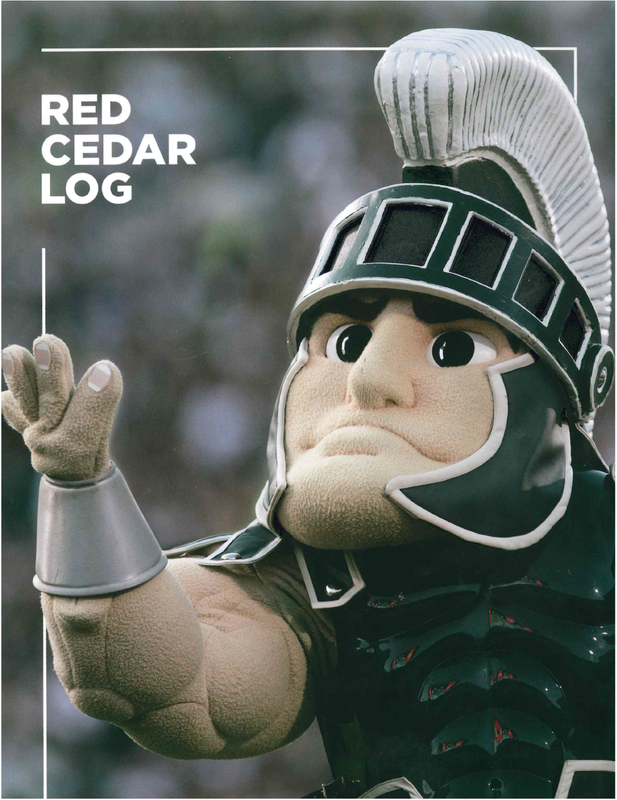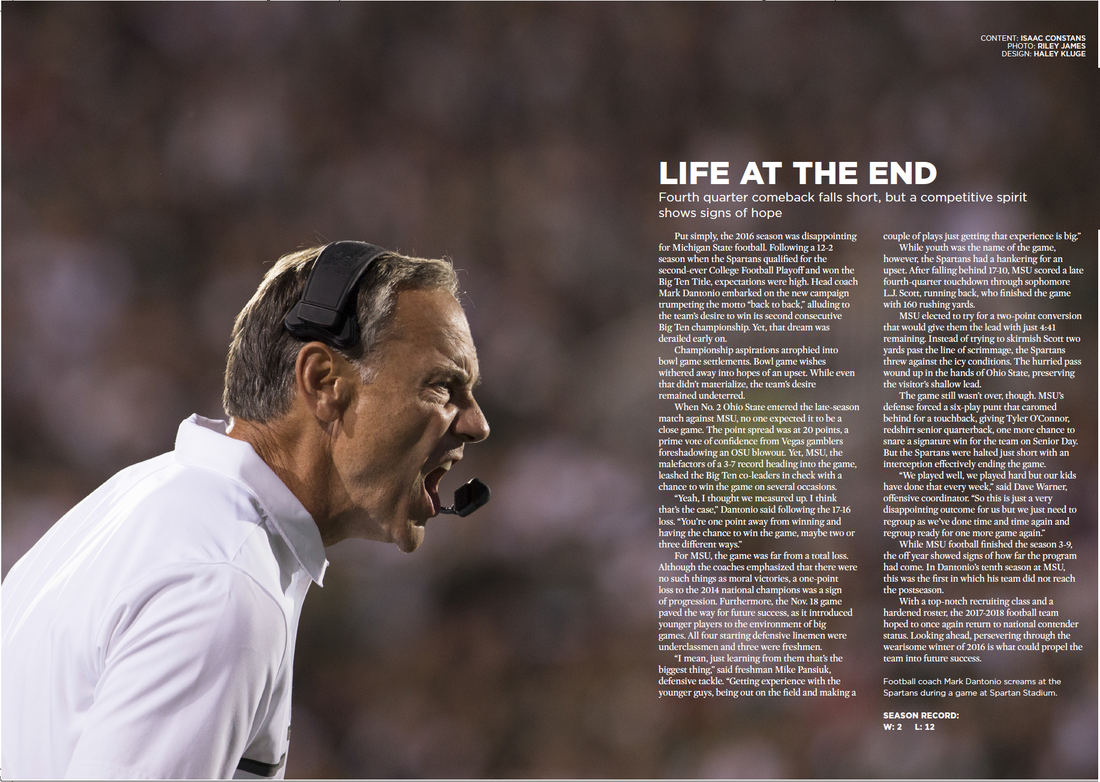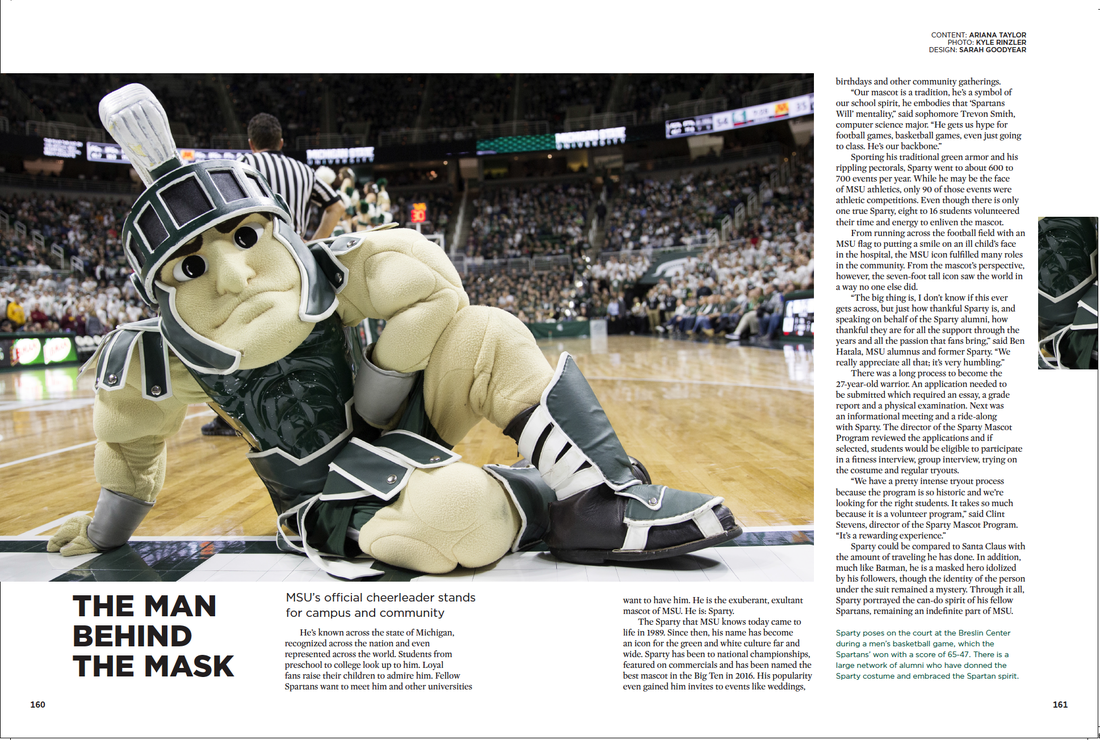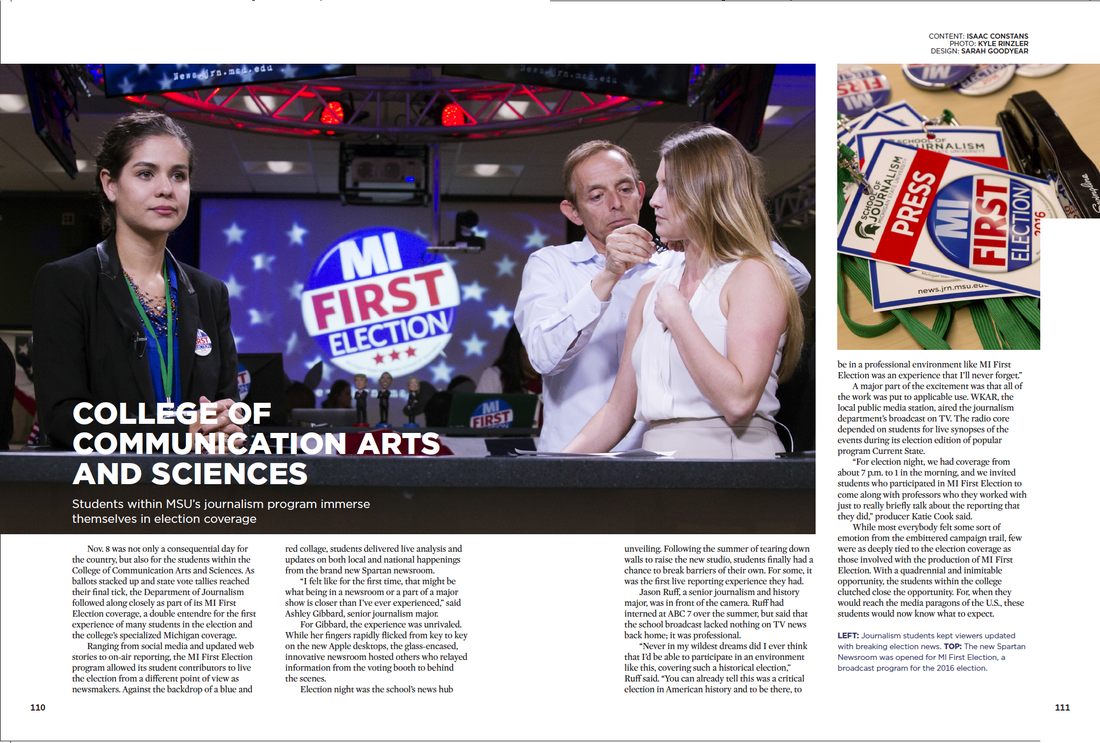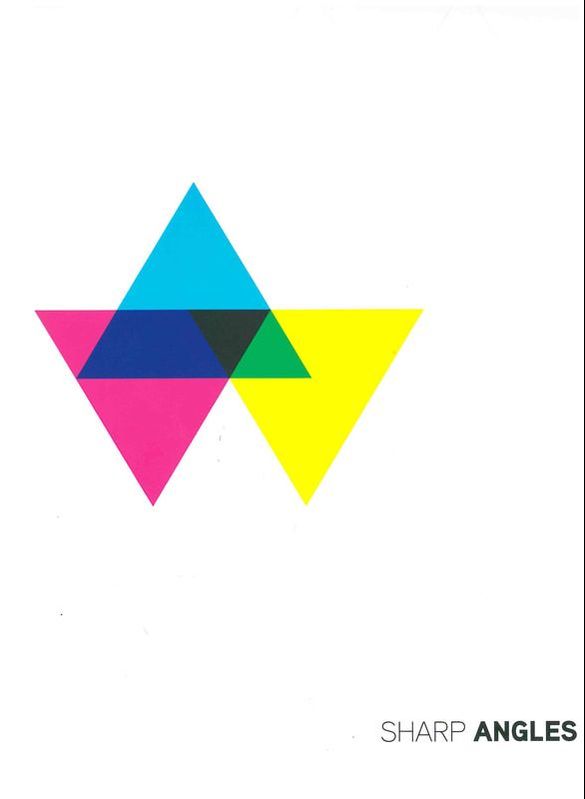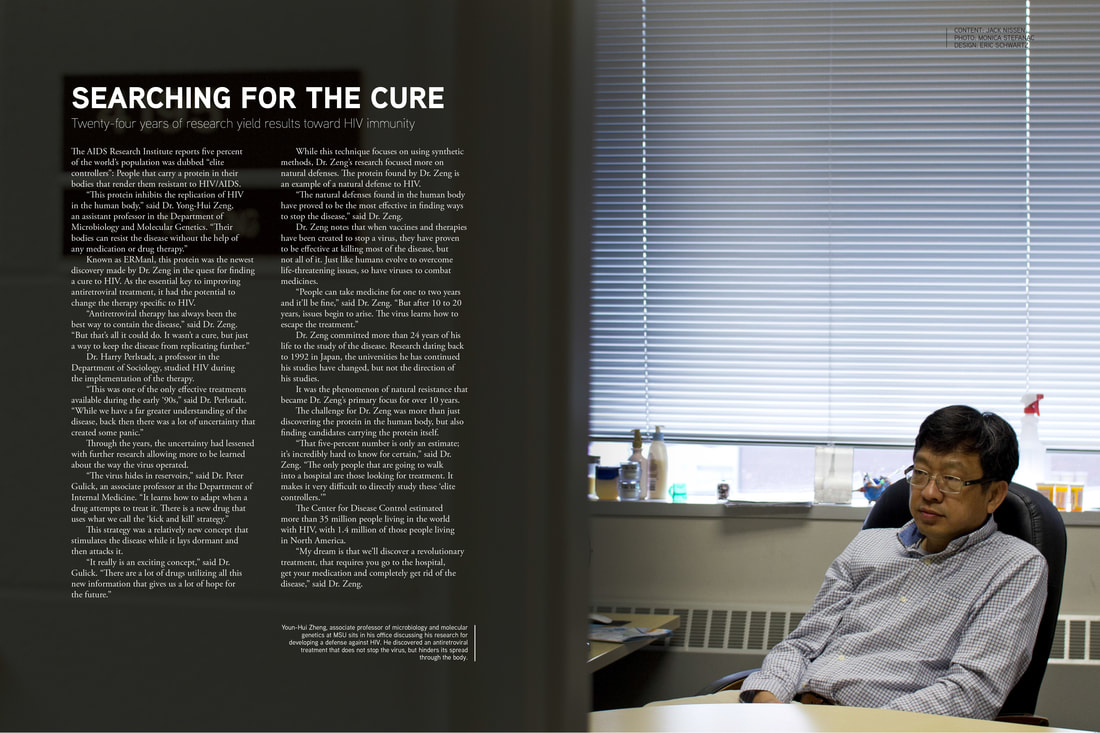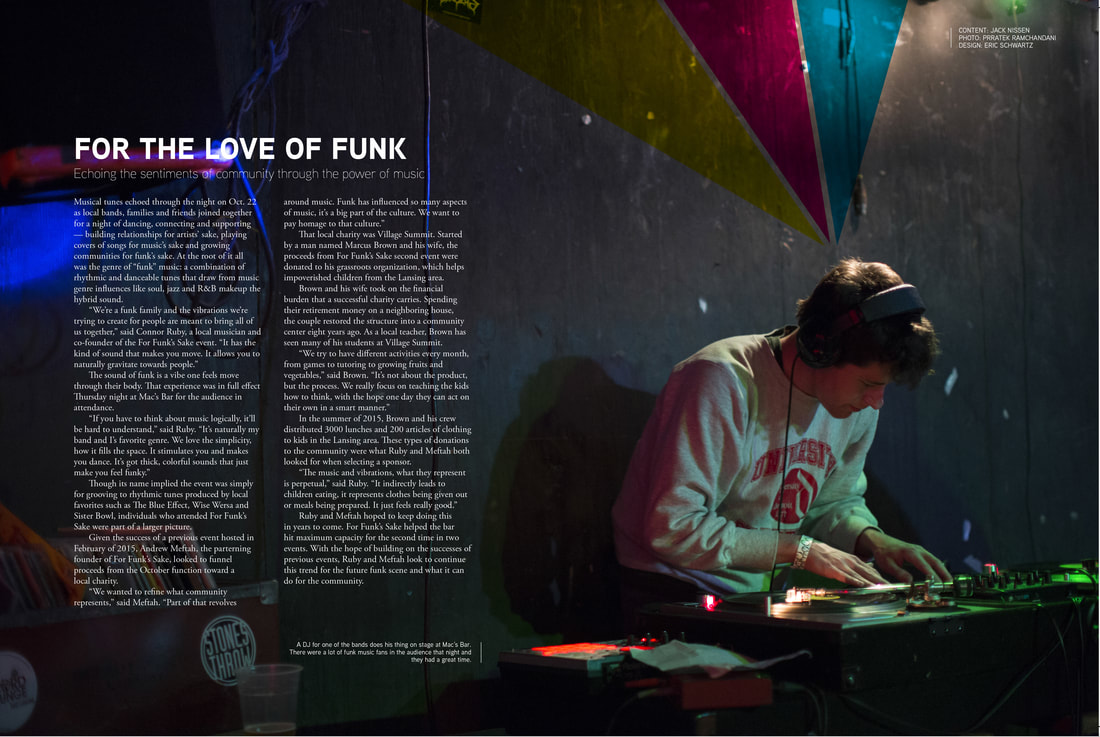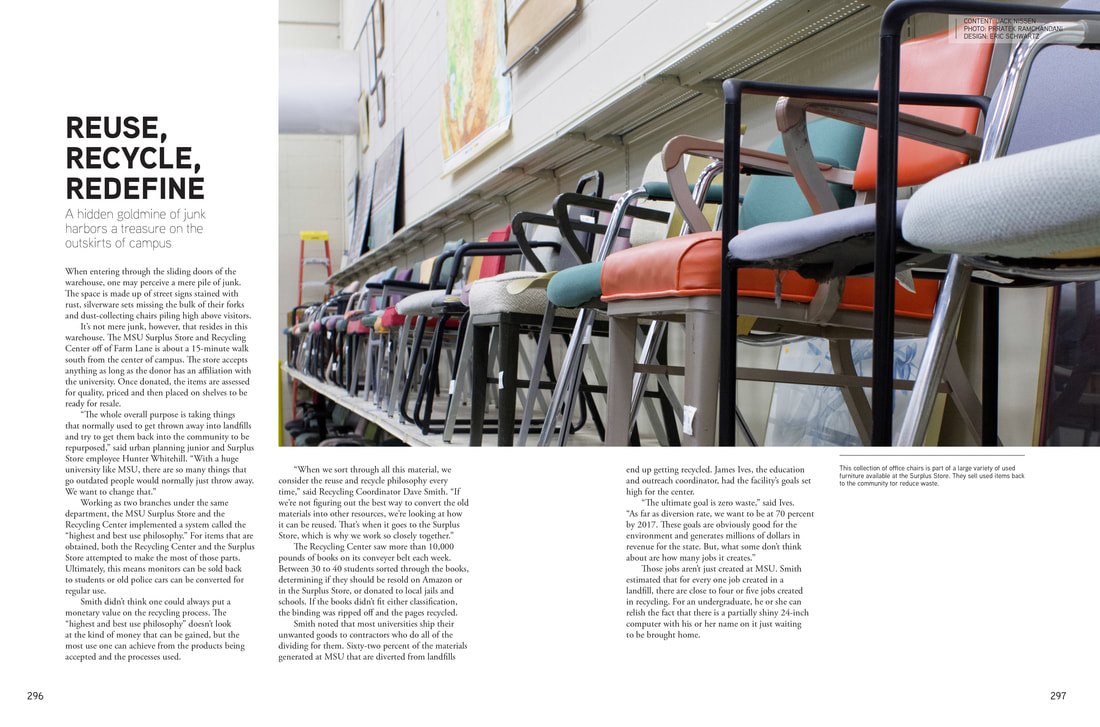Red Cedar Log
"Red Cedar Log" Volume 128
|
Yearbook round two was accompanied playing the role of content editor. There was a lot more proofreading, a lot more AP Style lookups and a level of stress that felt foreign yet unsurprising. Foreign because I had never been in a position of literary leadership. Unsurprising because I knew on the other side of the department, the writers were operating under a sphere of ignorance much like I was a year beforehand.
The book is titled "Red Cedar Log" because early on, the decision was made to break the yearbook archetype. This book didn't have a theme. Rather it focused on emphasizing the nostalgia buried within its photos and words on each page. I think that was reflected rather well in some of the spreads. Ignoring yearbook norms, along with an editor staff of 2, I was charged with editing writers drafts, keeping watch for content edits to better help the writers match the desired style that comes with writing for the Red Cedar Log. "The words inscribed on its pages echo the stories of all made on campus. It serves as a log for sentiments to be stored, should they ever fade from the memory banks of fellow students and faculty."
|
"Sharp Angles" Volume 127
|
For yearbooks, the name of each edition's theme may vary only in name, with almost every volume striving to find the hidden angle in each story. The cover reads "sharp angles," which reads as if this theme follows the same old tradition. However there was a literal interpretation of this title.
The 127th volume of the Red Cedar Log worked toward finding a more refined point of view in the words of articles, while at the same time using that point of view to guide the visual aids of the book. The person or object at the center of the story may find themselves in the composition of the photo, but there is an emphasis on geometrical patterns as well. Converging lines, obtuse vertexes and rounding boundaries fill the pages of this 375 time stamp of MSU history. My job was in the content department; pitching stories, interviewing sources, writing articles and everything in between. You'll find evidence of all of that and more below. "From the first day of lecture, to the final toss of a tassel, they approach problems by searching for crisp ideas. Looking from more than one vantage point. Venturing for smarter solutions. More Sharp Angles." |
